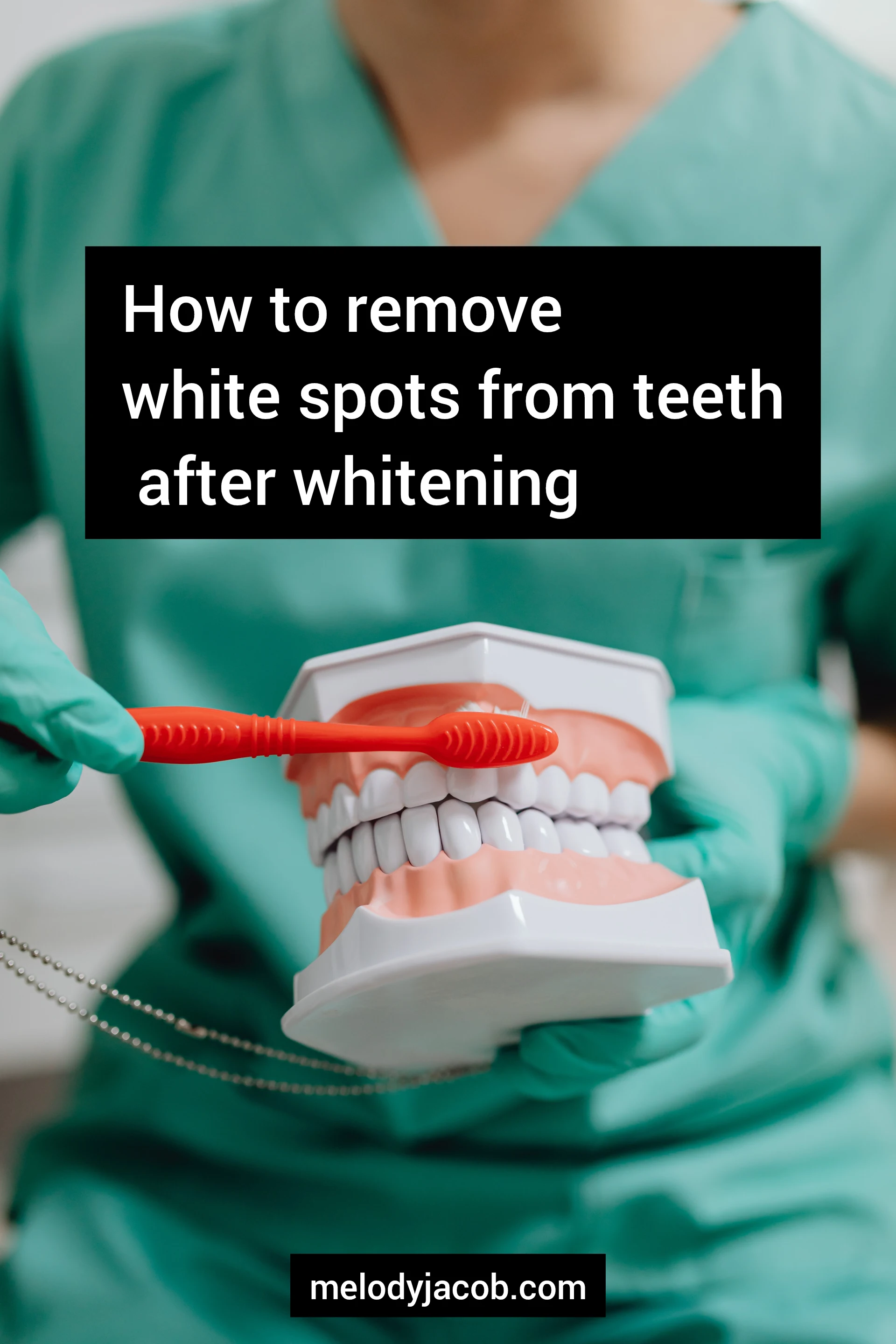3 Questions About Tooth Whitening, Answered
Although many people wish they had whiter teeth, misconceptions and apprehension about the tooth-whitening procedure prevent some people from receiving the necessary care. Take a look at these Frequently Asked Questions About Teeth Whitening and their answers if you want to know more about teeth whitening.
1. What Causes Stains on Teeth?
Dietary choices may have a significant impact on the possibility that dental stains may form on teeth. For instance, if you frequently consume beverages with a dark colour, like black coffee or red wine, your teeth are more prone to becoming discoloured.
Another significant factor in tooth discoloration is smoking. Due to the chemicals in tobacco causing discoloration, smokers' teeth frequently appear yellow.Last but not least, various drugs and medical disorders can discolour teeth. For instance, fluorosis, a disorder brought on by consuming excessive amounts of fluoride, can result in dark spots on the teeth. But this isn't a very common reason for stained teeth; most people just have stains that look bad and can be easily fixed with a quick tooth-whitening procedure.
What is a holistic dentist?
A holistic dentist is one who takes into account other lifestyle factors, such as your diet, sleeping habits, or hormonal changes, that may be causing the problem and need to be addressed.
The first major step toward better oral health is selecting a qualified and licenced dentist. Despite the numerous options available, most people struggle to find a family dentist. While there is no doubt that a conventional dentist can assist in the diagnosis and treatment of common dental issues, the trend is rapidly shifting towards holistic dentists. Notably, holistic dentists are also licenced practitioners who primarily focus on the relationship between oral health and overall body health. Visit A Holistic Dentist For These 3 Excellent Reasons.
Biocompatibility Testing
Today, material science has taken over the field of dentistry, and dentists are still looking for safe and effective materials for dental procedures and devices. Some materials, however, contain chemicals that a patient may react to, resulting in complicated health issues. Holistic dentists understand that every body system is different and reacts differently to various dental materials. Holistic dentists prioritise biocompatibility testing before any dental procedure in this regard. Biocompatibility testing compares a patient's serum to specific chemical compounds to determine whether an allergic reaction is possible. The results help a dentist select the best dental treatment material for each patient.
How to Remove White Spots From Teeth After Whitening
Teeth whitening done at home doesn't yield immediate results (nor should it claim to). The results come on gradually over a period of weeks, and you will need to periodically whiten your teeth after that in order to maintain your results. But what if you're both disappointed and a little taken aback by those outcomes? Some individuals who make an effort to whiten their teeth might discover that while their smile as a whole is whiter, some individual teeth are even whiter than the rest. Is the emergence of white spots on teeth after whitening normal?
An unpleasant development
The emergence of these white spots is probably an undesirable development since you're trying to improve the appearance of your teeth. It happens occasionally, and there is a known reason why. Fortunately, there is also an obvious answer.
Hypo-Calcification
Your dental enamel, which is the area of the tooth being whitened, has an irregularity on its surface, which is the cause of the issue. When your enamel has a low level of calcium, it is said to be hypo-calcified, which can cause it to become brittle and uneven. This might be inherited or connected to your diet. It might also happen if you had orthodontic braces on for a long time, which would have covered some of your teeth. Simply put, whitening has made these white spots much more noticeable, even though they have always been present.
Regular dental exams are vital for maintaining healthy teeth and preventing cavities. Unfortunately, many individuals do not visit the dentist until they encounter a serious oral problem, such as a toothache.
Neglecting a dental examination can lead to more severe problems in the future. If you're delaying your next appointment because you're ashamed or can't find the time, here are five fundamental reasons why you should visit the dentist regularly.
Examine for cavities:
Cavities, or tooth decay, are the most prevalent dental condition affecting the majority of Australian adults. It is necessary to check for cavities at dental appointments. If you wait to visit the dentist for a toothache, he or she may be unable to assist you. Instead, the damaged tooth must be taken out to stop the cavity from getting worse and infecting the gums.
By practising good oral hygiene and visiting your dentist twice a year for routine check-ups, you can effectively prevent cavities. If you brush twice daily and floss once daily, especially after meals and before bed, you should be able to prevent most cavities.
Dental emergencies can be incredibly stressful, particularly if your teeth are in pain or if you are travelling and unable to see your regular dentist. Visiting a dentist as soon as possible, however, can bring relief and peace of mind. This guide describes three of the most common dental crises and the appropriate response.
A tooth was knocked out.
Many individuals are unaware that a permanent tooth can sometimes survive after being knocked out. The NHS discusses the initial measures to follow if a tooth is knocked out, stating that the tooth should be picked up (but not by the root), cleaned, and placed back in the gum. If necessary, dissolve it in milk or saliva. You should then visit an emergency dentist as soon as possible, as the sooner you arrive, the greater the likelihood that the tooth can be preserved. If it cannot be salvaged, you will need to explore your options with your regular dentist.
A Dental Abscess
One of the most uncomfortable and painful dental emergencies is a dental abscess. It is a bacterial infection that can occur inside a tooth or gum, causing throbbing pain, aching gums, ear and jaw pain, and poor breath, among other symptoms. Abscesses are critical to treat because the infection that causes them can readily spread. The only way to treat an abscess is to visit an emergency dentist immediately so that the pus can be drained and the source of the illness addressed. In the meanwhile, you may wish to use an over-the-counter pain reliever and a heating pad on your face.
Treatment for a Toothache
While your first objective may be to relieve tooth discomfort as soon as feasible, you must first determine the potential cause. When we experience pain, our bodies transmit warning signals to our brains, indicating that something is wrong. Oral pain is typically an indication of a problem that requires immediate attention.
Oral discomfort can be caused by a variety of serious conditions, such as tooth decay, a damaged filling, a fractured tooth, infected gums, or an abscessed tooth. Without prompt treatment, you could develop major consequences if the latter occurs. The tooth and supporting bone may be lost as a result of these issues. Occasionally, bacterial infections can spread to other parts of the body, necessitating hospitalisation or worse. Due to these factors, it is crucial to seek emergency care if you exhibit any of the following symptoms of an abscessed tooth:
Red, swollen gums
A fever
A red, swollen lump in the mouth
Bleeding or pus
Throbbing pain
Having a bitter or salty taste in the mouth.
facial or jaw enlargement
A cracked or badly fractured tooth
How to Relieve Toothaches
Are you desperately seeking a temporary toothache remedy? You can get toothache relief with over-the-counter drugs, cold compresses, and other at-home therapies if your toothache is not caused by a major underlying disease or if you are awaiting an impending dentist appointment. Continue reading for the 10 Proven Ways to Get Rid of Toothaches Fast.
What Is a Smile Makeover and How Does It Work?
What Kinds of Dental Issues Can a Smile Makeover Fix?
Because our teeth are used on a daily basis and are impacted by a variety of factors, dental issues are a major concern in the health industry today. There is a constant search on the internet for the most effective methods to alleviate toothaches, and fortunately, the majority of causes remain the same as the years pass.
Dental pain can be quite severe. Getting relief from a toothache, an abscessed tooth, or any other dental ailment can be difficult. This article describes five methods for alleviating dental discomfort whenever it occurs.

1. To relieve pain and inflammation, take ibuprofen.
Taking non-steroidal anti-inflammatory drugs (NSAIDs) such as ibuprofen is one of the quickest ways to alleviate some of the discomfort caused by dental pain. Ibuprofen can reduce swelling, resulting in less strain on adjacent teeth or gums, and can also assist in alleviating discomfort. Continue taking analgesics until your symptoms have completely disappeared.
2. Rinse your mouth with a saltwater solution.
Sodium chloride, also known as common table salt, is a useful remedy for dental pain. Mix a pinch of salt with a full glass of warm water, then rinse your mouth with this solution. Continue rinsing for a time, and then spit it out. Saltwater will assist in lessening pain and begin killing any bacteria in the affected area, thus accelerating your recovery.
3. Applying ice to a wound reduces pain and swelling.
Using an ice pack or commercial cold pack to numb the affected area is one of the quickest methods for relieving dental pain. Every few hours, you should use an ice pack or commercial cold pack for a few minutes. You should wrap the ice pack in a towel to protect your skin and leave it on for no longer than fifteen minutes, as leaving it on longer can cause more harm than good.
Gum Disease Risks






